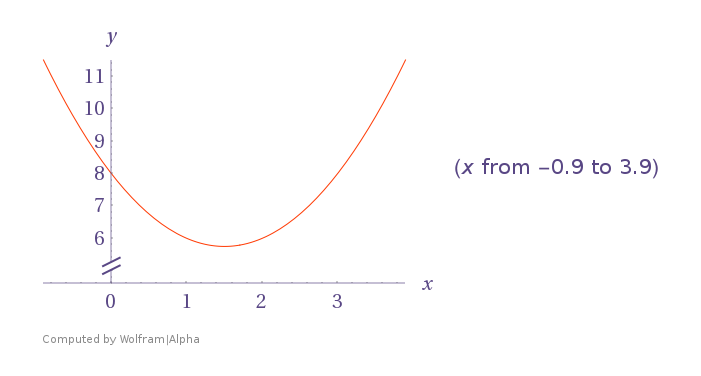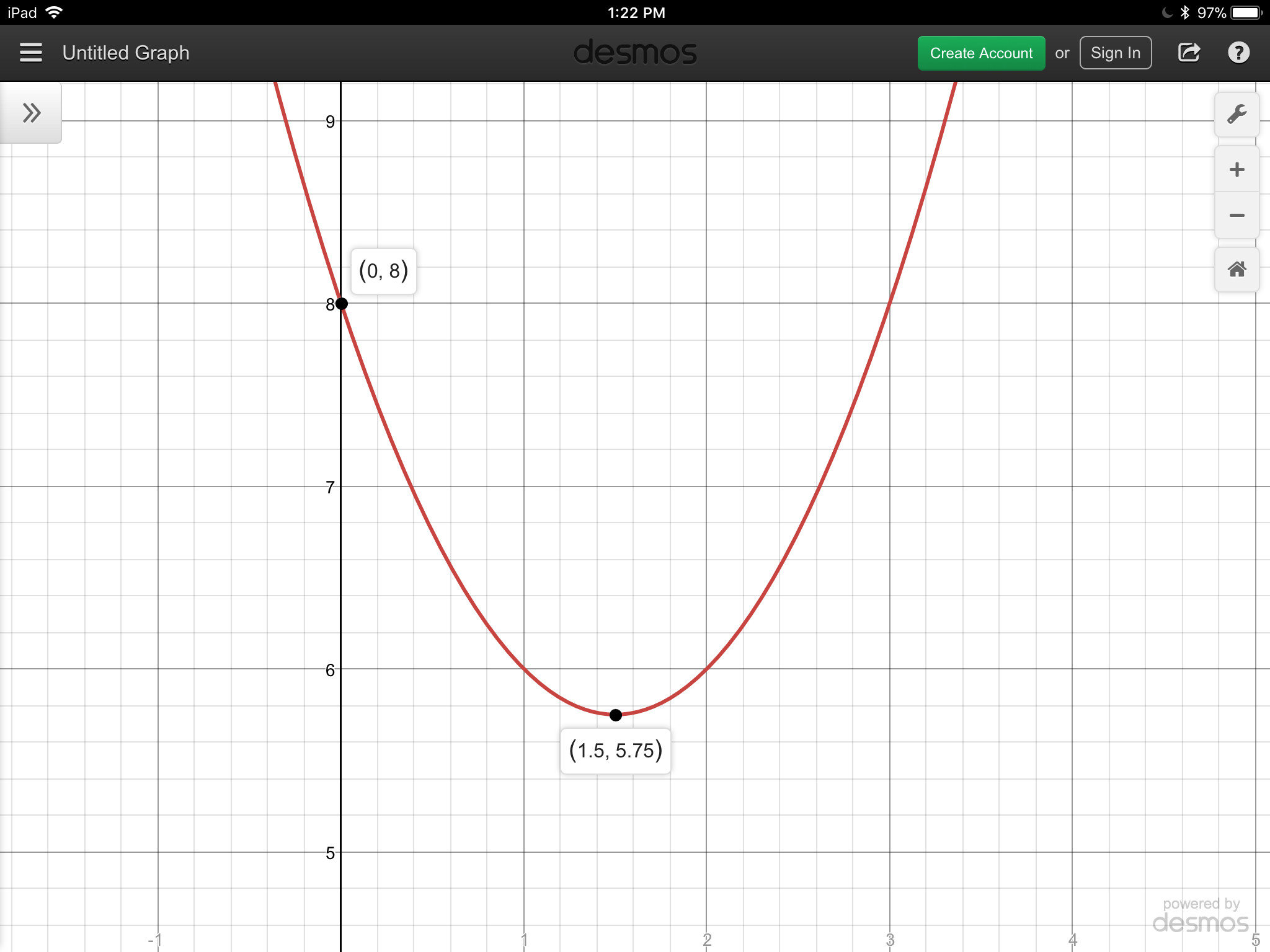How do you graph the parabola y=x^2-3x+8y=x2−3x+8 using vertex, intercepts and additional points?
2 Answers
For
so
So the vertex is
Since
The
Explanation:
After finding the
So there will be no

Vertex:
Other point:
Explanation:
We can find the
In this equation,
a=1a=1 b=-3b=−3 c=8c=8
Plugging in yield:
To find the
The
For a third point, we can find the axis of symmetry of the parabola, and reflect the
The axis of symmetry is the vertex’s
That’s all we need to graph a parabola.
 Desmos
Desmos



